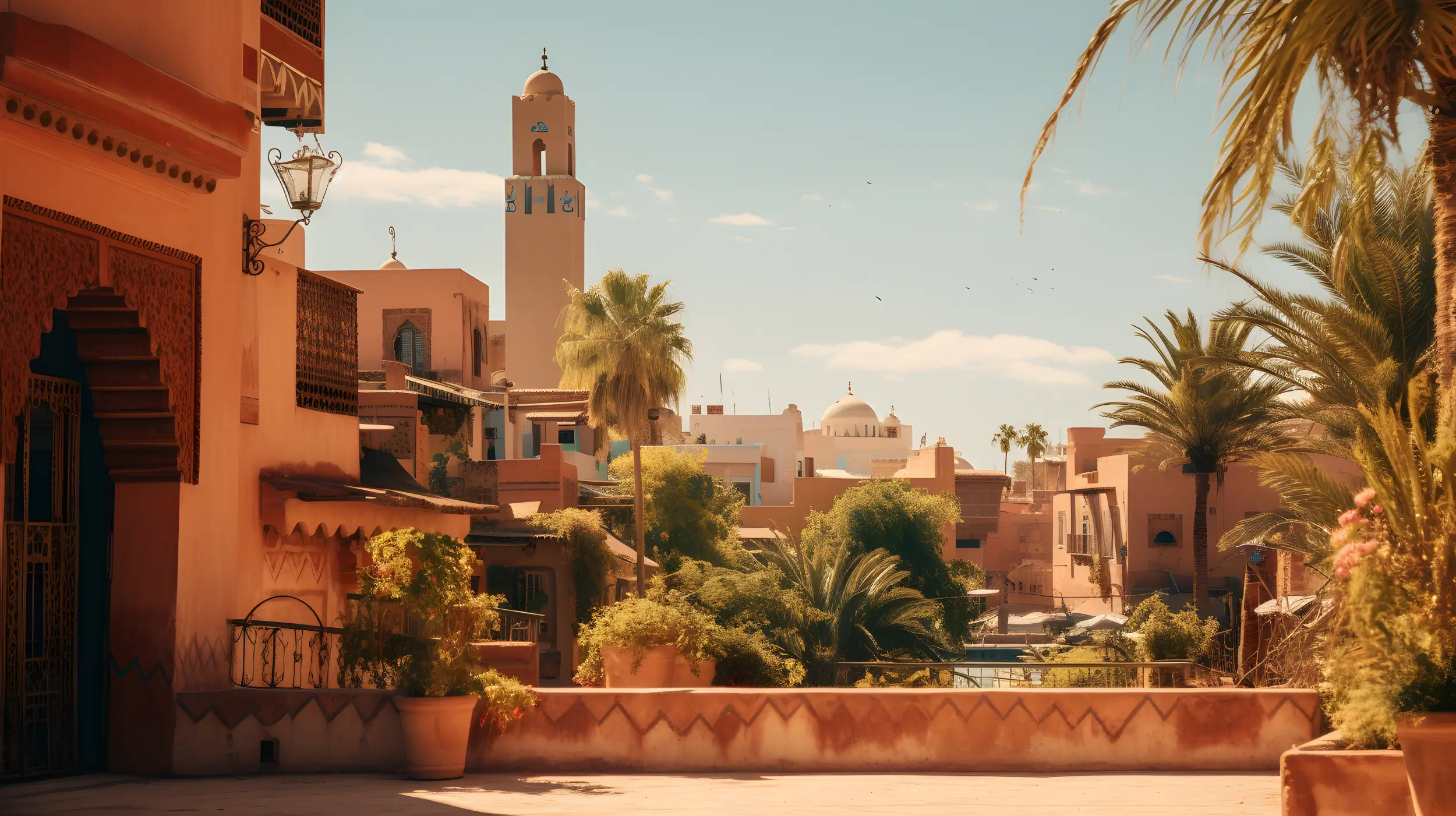
Morocco is a diverse country that offers something for everyone. From its lively medinas and souks to its majestic imperial cities, scenic mountain ranges, vast desert dunes, and beautiful coastline, there is no shortage of options for travelers. The country’s rich culture, mouthwatering cuisine, and welcoming locals add to its charm. But the million-dollar question is, when is the best time to visit Morocco?
The answer depends on your preference for weather, intended activities, and the regions you plan to visit. Morocco is a year-round destination, but understanding the country’s seasonal variations will help you make the most of your journey.
Average temperatures
Average temperatures in the capital Rabat.
| Month | High (°C) | Average (°C) | Low (°C) |
|---|---|---|---|
| January | 17 | 12 | 8 |
| February | 18 | 13 | 9 |
| March | 20 | 15 | 10 |
| April | 22 | 17 | 12 |
| May | 24 | 19 | 14 |
| June | 27 | 22 | 17 |
| July | 30 | 25 | 20 |
| August | 31 | 26 | 21 |
| September | 29 | 24 | 19 |
| October | 26 | 20 | 15 |
| November | 22 | 16 | 11 |
| December | 18 | 13 | 9 |
Spring (April to June): The Floral Season
If you’re keen to explore Morocco’s great outdoors, spring is ideal. The weather during these months is wonderfully mild, and the Moroccan landscape is particularly vibrant, with wildflowers carpeting the valleys and fields. Hiking in the High Atlas Mountains is pure joy, and the conditions are perfect for exploring imperial cities such as Marrakech, Fez, Meknes, and Rabat without enduring the summer heat.
Summer (July to September): The Coastal Retreat
Summers in Morocco can be scorching, especially inland and in the desert, where temperatures often soar above 40°C (104°F). However, it’s the ideal season for beach lovers to enjoy the Atlantic and Mediterranean coasts. Cities like Essaouira, Agadir, and Asilah offer respite from the heat with their cool sea breezes. The nights are warm, perfect for those who enjoy evening strolls and late-night market explorations.
Autumn (October to November): The Cultural Immersion
Autumn is another excellent time to visit Morocco. The temperatures have cooled, making it a comfortable time to visit the Sahara Desert or wander the narrow alleys of Marrakech and Fez’s medinas. This is also the time of the year when you can attend the Erfoud Date Festival, celebrating the annual date palm harvest. Attending this festival will give you a glimpse of authentic Moroccan culture and its agricultural heritage.
Winter (December to March): The Snowy Adventure
In contrast to the sweltering summers, Moroccan winters can be chilly, particularly in the evenings and mountainous regions. If you’re a winter sports enthusiast, this is your time to visit. The High Atlas Mountains receive ample snowfall, turning places like Oukaimeden into prime skiing territory. Conversely, you can still enjoy warmer weather and camel trekking in the Sahara Desert, where winter temperatures are typically mild during the day.
Special Considerations
While the weather is a significant factor when planning your visit, remember that many restaurants and shops may have limited hours or even be closed during the Islamic holy month of Ramadan. Although this offers an opportunity to experience an essential aspect of Moroccan culture, it might require additional planning.
So, when is the best time to visit Morocco? Ideally, the milder spring and autumn months offer the most comfortable climates and scenic beauty. However, with the proper planning, you can find something magical about Morocco in every season. Be it the coastal retreat in the heat of the summer, or the snowy mountain escapades in the heart of winter, Morocco truly is a year-round destination.